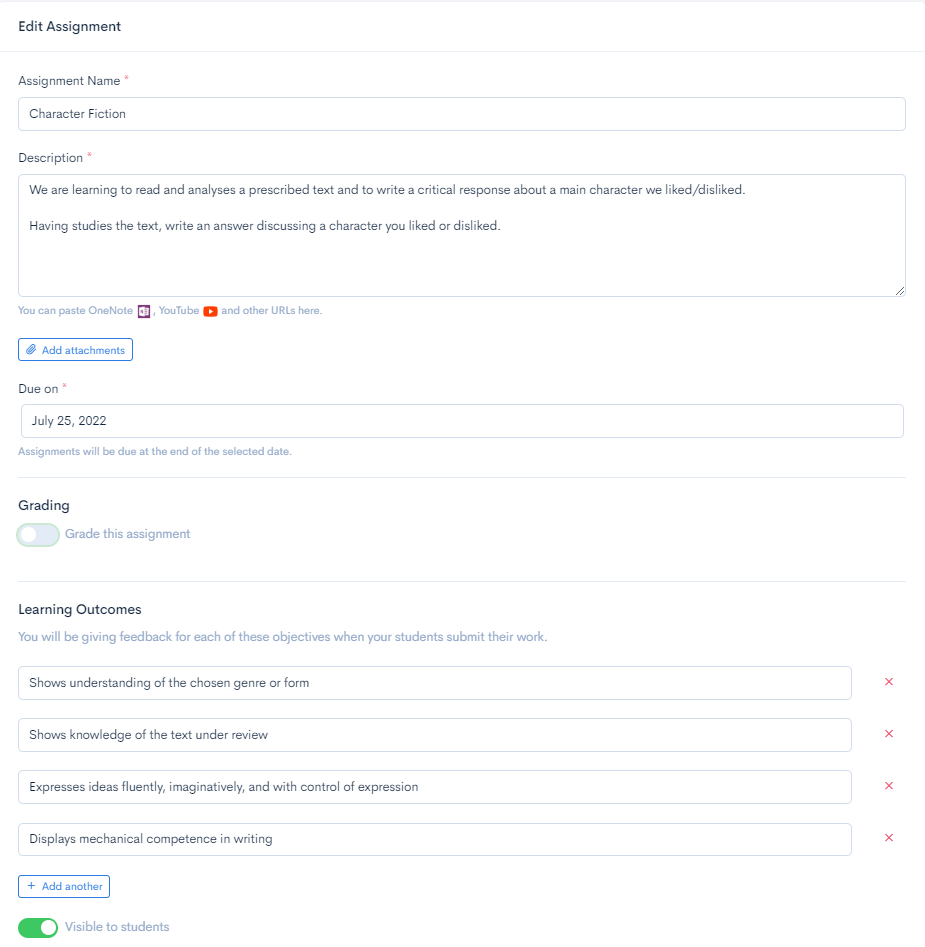Create an assignment in Nurture
Creating your first assignment is a breeze! As you learned in the previous unit, Nurture hinges the assignments on learning objectives. Research strongly shows that relating feedback to the goals of the assignment leads to an increase in student learning outcomes and increased motivation and engagement.
Begin by selecting the New assignment button, you'll be brought to the assignment creation page.

From here add the essential details of your assignment:
- Name
- Description
- Due date
You also can attach supporting materials such as images, voice, video, PowerPoint slides, Office documents, and so much more. Here are ways in which the upload feature can empower your assignments:
- In a modern language subject, practice oral and aural work by providing spoken production to students, and accepting such materials in return.
- In business subjects, provide students with templated bookkeeping records which they can edit and resubmit.
- For art or design subjects, have students upload an image of their work.
- Want to students to practice and master a skill? Have them record themselves and upload a video for you to review.
Next you can turn grading on or off. Having grades on is useful for validation and certification purposes. Turning off grading allows you to collect drafts of student work and is great for continuous assessments.
Learning objectives
The key to a successful assignment is the creation of good learning objectives.
Nurture uses the terms "learning objectives," "learning outcomes," and "success criteria" interchangeably in the platform. The reasoning behind this is that different countries/regions use a variety of these—but research shows that the most important aspect is having clear goals for your students.
Since you're here, it's doubtful you need help with creating learning objectives! But it's recommended you have a rummage through Bloom's Taxonomy—particularly modern interpretations—where you can find great learning objective stems to get you going!